Dr. Ardy [Robert Black Fellow] is investigating the genetic determinants that govern the behavior of fibroblasts, a type of connective tissue cell that has been implicated in arthritis, heart disease, and cancer. Activated fibroblasts can exacerbate disease through various mechanisms, including remodeling tissue architecture and modulating the immune system. Dr. Ardy plans on using state-of-the-art genetic tools, including CRISPR inhibition and activation coupled with single-cell RNA sequencing technology, to uncover the proteins and pathways that regulate fibroblast behavior and thereby inform the development of new targeted cancer treatments. Dr. Ardy received his PhD from the Medical University of Vienna and his BS from the University of California, Los Angeles.
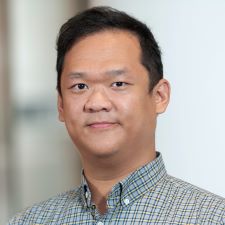

Dr. Thawani [Merck Fellow] studies selfish DNA sequences—so called because they copy and paste themselves within the human genome despite offering no specific fitness advantage. Dr. Thawani will utilize advanced methods such as cryo-electron microscopy to reveal the cellular machinery that assists these selfish elements and thus delineate their mechanism of mobility. She will use this insight to engineer new genome editing technologies to precisely insert large genes at user-specified sites in a variety of human cell types. This general technology will not only translate directly into new gene therapies, but also result in wide-ranging applications in synthetic biology. Ultimately, this work will contribute to treatment for many cancer types, including improved CAR-T therapies for blood cancers.
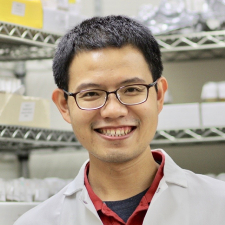
Dr. Chang is studying protamines—short, positively-charged proteins that condense DNA into chromatin and regulate gene expression in sperm nuclei. While eukaryotic cells use histones to package genomes in a way that allows access for transcription and replication, sperm cells must package their genomes more tightly. For this, many animals deploy protamines instead of histones. Despite sharing certain functions with highly conserved histones, protamines have independently arisen in evolution multiple times and are continuing to rapidly evolution. Using Drosophila fruit fly species as a model, Dr. Chang studies how sperm chromatin regulates gene expression and reproductive fitness. Additionally, although protamine expression is typically limited to testes, their misexpression has been observed in many cancers, indicating an opportunity for therapeutic intervention.
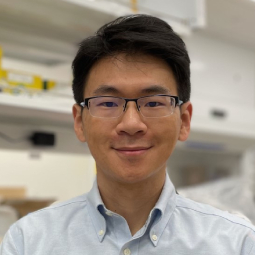
Dr. Tai studies bacterial biofilms or aggregates of bacterial cells in an extracellular matrix. Biofilms play a critical role in many health and industry settings. Biofilm-forming bacteria and imbalance in patients’ gut microbiota have been found to correlate with cancer development, and cancer patients receiving therapy frequently suffer from bacterial infections. From the unique perspectives of microbiology, soft matter physics, and ecology, Dr. Tai aims to decipher how, at the single bacteria cell level, heterogeneities in cell shape, organization, and gene expression constitute the function and development of their collective communities: biofilms. His work is expected to deepen our understanding of bacterial biofilms and ultimately contribute to therapeutic strategies.
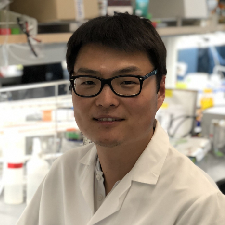
Dr. Gu [Fraternal Order of Eagles Fellow] is deciphering the combinatorial code of mammalian transcription regulation. The precise and robust regulation of gene expression is typically achieved through a combination of multiple transcription factors. However, we lack understanding of how a mammalian transcription system perceives, processes, and presents combinations of transcription factors. Dr. Gu will combine quantitative modeling and synthetic approaches to analyze the complex interactions among natural transcription regulatory proteins and apply the principles learned to engineer a programmable transcriptional platform with tunable logic. This work promises to deepen our understanding of mammalian transcription regulation and unlock new capabilities for emerging cell-based therapeutics.

Dr. Squyres [National Mah Jongg League Fellow] is using quantitative microscopy and cell biology approaches to study how bacteria in biofilms coordinate their behavior in space and time. Biofilms are dense, multicellular communities of bacteria embedded in an extracellular matrix. Biofilms often form during bacterial infections, resulting in infections that are difficult to treat and resist antibiotics; cancer patients are at particular risk for these types of infections. Dr. Squyres is currently investigating how the release of extracellular DNA, a key component of the biofilm matrix, is coordinated during biofilm development. Greater understanding of how bacteria function in biofilms can lead to new approaches to target these treatment-resistant infections.
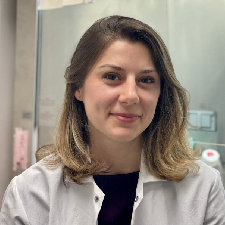
Myelodysplasia and acute myeloid leukemia are blood cancers with a poor prognosis. At the root of these malignancies are cells harboring mutant forms of proteins with dysfunctional activity which results in abnormal cell behavior and drives disease progression. The focus of my project is the development of new therapeutics that precisely identify cells with mutant forms of the proteins and, by harnessing their aberrant biological activity, causes those cells to self-destruct. These selective therapeutics will be able to kill cancer cells but leave the healthy cells intact proving more effective and having less side-effects than the chemotherapies currently in use.

Dr. Cissé [Merck Fellow] aims to define the functional importance of nutrient sensing within the tumor microenvironment. How cells sense and adapt to the availability of nutrients in their environment is incompletely understood, but one key pathway is the signaling system anchored by the mTORC1 kinase. The mTORC1 kinase regulates cell growth and metabolism in response to nutrients such as amino acids and glucose. Aberrant mTORC1 signaling is implicated in several cancers, including melanoma, known to be heavily influenced by factors in the microenvironment such as nutrient availability. Dr. Cissé aims to understand how tumor metabolism senses and responds to varying nutrient levels, which will be essential for developing novel therapeutic targets.
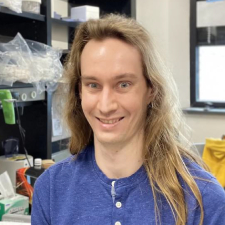
Dr. Catipovic [HHMI Fellow] focuses on the mechanisms governing the resolution of errors that arise during RNA translation in mammals. Ribosomes translating the same message can collide if they are damaged or encounter blockages much like cars involved in a traffic accident. While cells can tolerate small numbers of these incidents, pervasive collisions overwhelm the cell and force it to make crucial decisions regarding long-term viability. Dr. Catipovic investigates the biochemical mechanisms governing this determination. He uses reconstituted translation systems, consisting of purified translation factors in vitro, as a tool to study the signaling pathways initiated by ribosomal collisions that effect the life-death decisions of severely stressed cells. Perturbation of these pathways can cause premature cell death or unregulated cellular proliferation, which is found in almost all cancers.
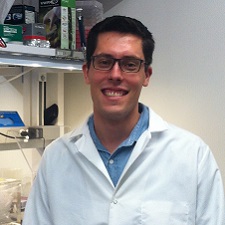
Our DNA is constantly subjected to damage, and our cells must repair this damage to ensure survival. Breaks in DNA that completely sever DNA molecules are particularly toxic, and failure to repair these breaks can lead to genetic alterations that drive cancer initiation and progression. Dr. Stinson studies the two main cellular pathways that repair these DNA breaks: non-homologous end joining (NHEJ) and homologous recombination (HR). Defects in these pathways are linked to predisposition to many cancers, including leukemia, breast, ovarian, and prostate cancers. His prior work has demonstrated how NHEJ minimizes genetic alterations during DNA break repair. Ongoing work will elucidate fundamental mechanisms of HR that suppress cancer and seek to identify new HR factors. This work has important clinical implications for identifying patients that may benefit from treatments that target HR-defective tumors and for discovering potential mechanisms of resistance to treatment.
